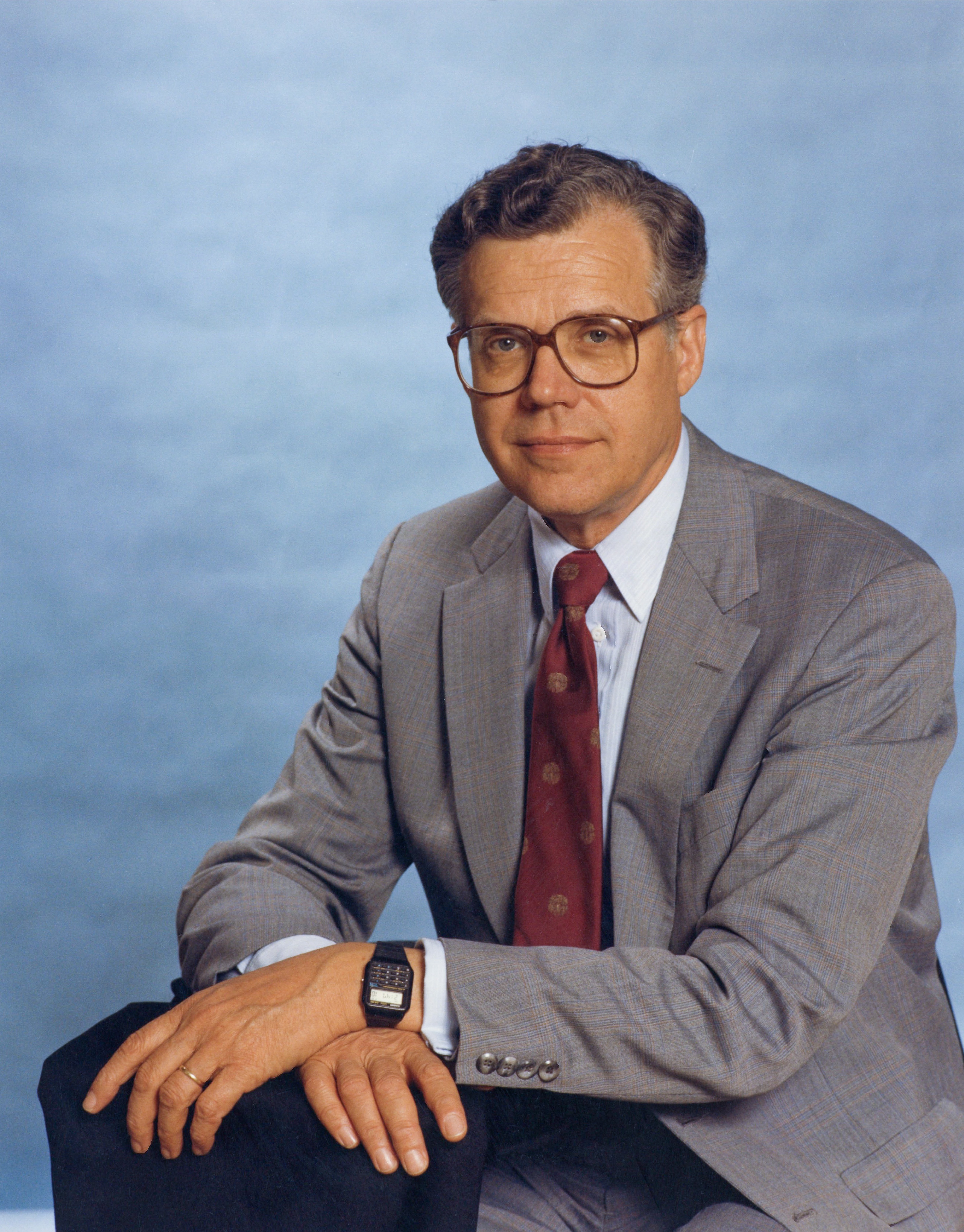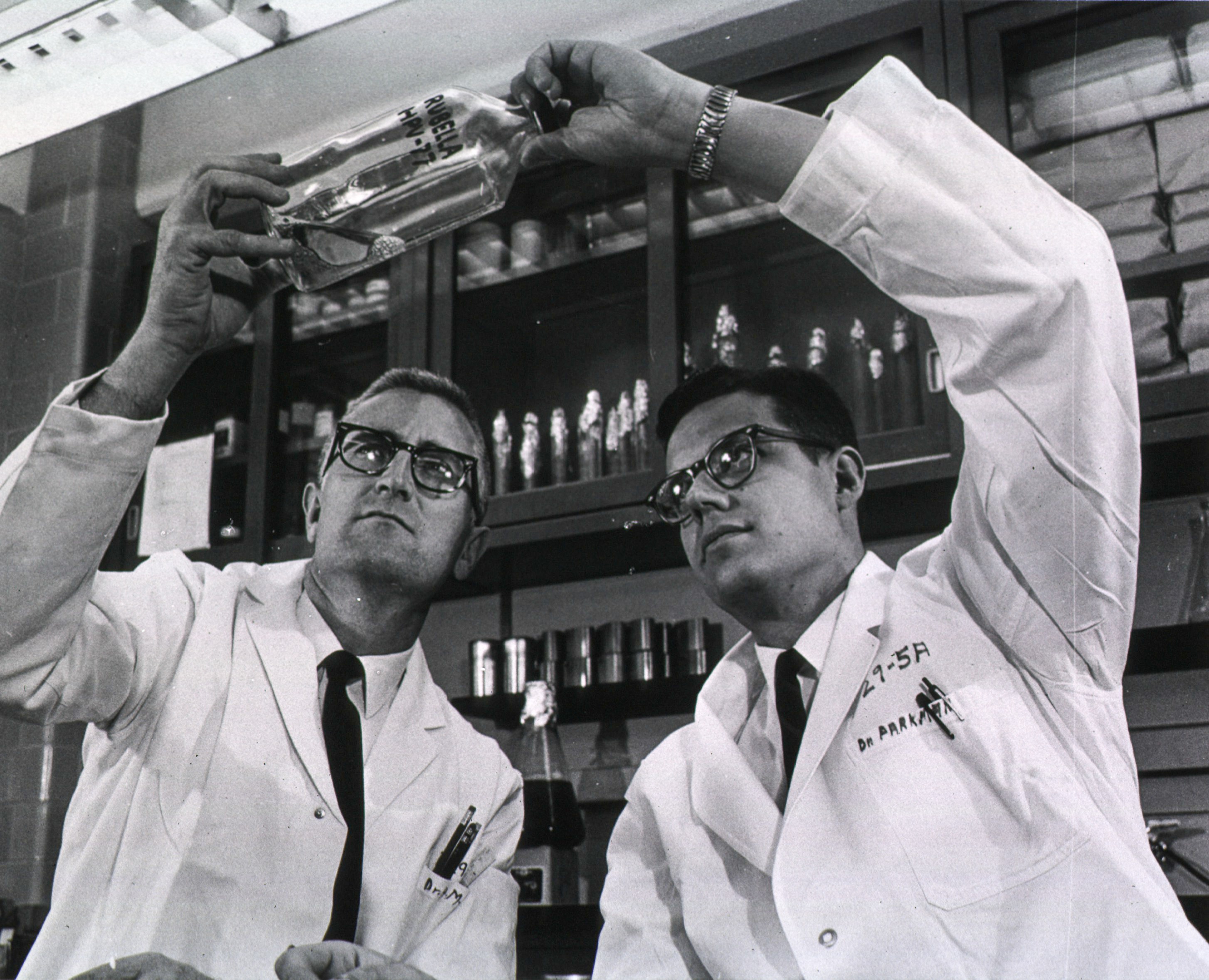Paul D. Parkman, M.D. (1932-still living)
Dr. Paul D. Parkman was one of the inventors of the rubella vaccine. Rubella is a contagious viral infection best known by its distinctive red rash.
Parkman grew up in upstate New York. He attended Saint Lawrence University and the State University of New York College of Medicine at Syracuse where he graduated first in his medical school class. He then interned at Mary Imogene Bassett Hospital in Cooperstown, NY and completed residency at Upstate Medical Center.
Parkman entered the “doctors draft” in 1960 and was assigned as a captain in the Army Medical Corps to Walter Reed Army Institute of Research. He and his colleagues isolated the rubella virus from infected soldiers at Fort Dix, New Jersey.
FDA History Office
He joined the National Institutes of Health (NIH) in 1963, working in the Laboratory of Viral Immunology in the Division of Biologics Standards (DBS). Parkman became chief of the Section on General Virology in 1971.
Parkman developed the first rubella vaccine with Dr. Harry M. Meyer, Jr. at NIH; their vaccine started clinical trials in 1965 at the Arkansas Children’s Colony and was licensed commercially in 1969.
He was also part of the team that received a patent in 1971 for the rubella immunity test. The Laboratory of Viral Immunology was, at the time, in Building 29A on the second floor.
Dr. Harry M. Meyer, Jr., at left, and Dr. Paul D. Parkman, at right, with the rubella virus. National Library of Medicine
As scientific director, Parkman oversaw all of the CBER scientific programs and its intramural research, and he served as a principal liaison with the scientific community. During his tenure as center director, among other activities, CBER approved a Haemophilus b conjugate vaccine for the most common cause of bacterial meningitis in children as young as 18 months. The FDA also doubled the number of inspections of blood banks and concluded an agreement for improved blood processing operations across the nation—actions that followed the recall of two dozen units from two American Red Cross collection centers that indicated exposure to HIV and hepatitis B. Under Parkman, CBER developed guidelines to design clinical studies to assess safety and efficacy of allergenic products and it licensed tests to detect antibodies in blood to the Human T-Lymphotropic Virus Type I (HTLV-I) retrovirus.
Parkman was the recipient of numerous awards including: the Joseph P. Kennedy, Jr. Foundation’s International Award for Distinguished Scientific Research in 1971, the Department of Health and Human Services’ Meritorious Executive Rank Award in 1980, and an honorary Doctorate of Science degree from his alma mater, the State University of New York in 1990.
Dr. Parkman worked in Building 29, Rooms 330, 332, 129, 130, and in Building 29A, Rooms 2B08 and 2B06.
Publications:
- “Experimental Rubella Virus Infection in the Rhesus Monkey” by Paul D. Parkman, P.E. Phillips, Ruth L. Kirschstein, and Harry M. Meyer, Jr., in the Journal of Immunology (1965). https://www.jimmunol.org/content/95/4/743.long.
- “Changes in technology of vaccine research, development, and control” by John C. Petricciani, Harry M. Meyer, Jr., Paul D. Parkman, and Hope E. Hopps in Bulletin, World Health Organization (1977). https://www.ncbi.nlm.nih.gov/pmc/articles/PMC2367080/.
- “Togaviruses: Rubella Virus” by Paul D. Parkman, Chapter 55 of Medical Microbiology, 4th edition (1996). https://www.ncbi.nlm.nih.gov/books/NBK8200/.
- “We Can’t Forget the Value of Vaccines” by Paul D. Parkman in FDA Consumer Magazine (2002). https://permanent.access.gpo.gov/lps1609/www.fda.gov/fdac/departs/2002/402_word.html.



